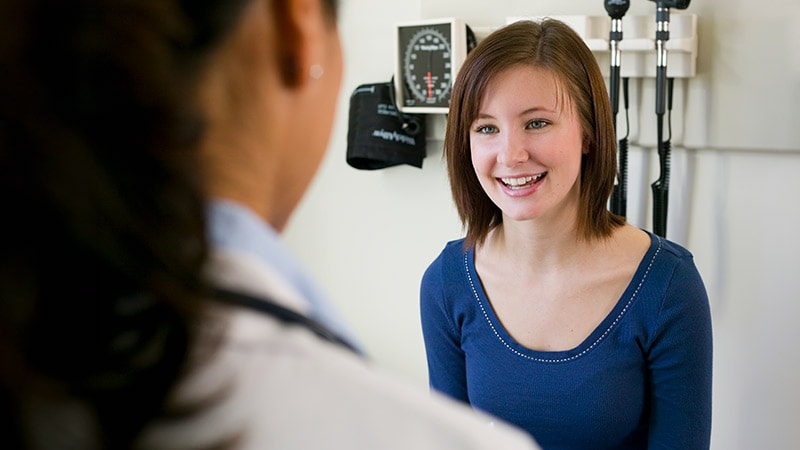Lauren Opladen remembers the agonizing wait all too well.
At age 17, struggling with paralyzing depression after losing her brother to suicide and her father to amyotrophic lateral sclerosis, her teacher suggested she seek help.
So, she did. But she had to spend 3 days inside an emergency department at the University of Rochester Medical Center in Rochester, New York, where the Comprehensive Psychiatric Emergency Program (CPEP) provides immediate care for youth and adults experiencing psychiatric emergencies.
“We were sleeping on a couch just waiting for all these services, when that’s precious time wasted,” Opladen said.
Opladen made it through that dark period, and 5 years later, she is a registered nurse at the same hospital. Every day she walks past a new facility she wishes had existed during her troubled teenage years: An urgent care center for children and adolescents experiencing mental health crises.
Brighter Days Pediatric Mental Health Urgent Care Center, Rochester, New York, opened in July as a walk-in clinic offering rapid assessment, crisis intervention, and short-term stabilization, provides referrals to counseling or psychiatric care. Children and adolescents at immediate risk of harming themselves or others, or who need inpatient care, are sent to CPEP or another emergency department in the area.
Similar walk-in facilities linking youth to longer-term services are popping up in nearly a dozen states, including New York, Ohio, Massachusetts, and Wisconsin. The emerging model of care may offer a crucial bridge between traditional outpatient services and emergency room (ER) visits for some young people experiencing mental health crises.
“We’ve seen a significant increase in the number of children and adolescents presenting to emergency departments with mental health concerns,” said Michael A. Scharf, MD, chief of the Division of Child and Adolescent Psychiatry at the University of Rochester Medical Center, who oversees operations at Brighter Days. “These urgent care centers provide a more appropriate setting for many of these cases, offering specialized care without the often overwhelming environment of an ER.”

The urgency of addressing youth behavioral health has become increasingly apparent. The most recent data from the US Centers for Disease Control and Prevention showed that over a 6-month period in 2020, during the early months of the COVID-19 pandemic, visits to the emergency department for mental health problems spiked 24% among children aged 5-11 years and 31% among 12-17-year-olds compared with the same period in 2019. Between March 2021 and February 2022, such emergency visits rose by 22% for teen girls, while falling by 15% for boys ages 5-12 years and 9% for older boys. Most visits occur during the school year.
But staffing shortages and limited physical space are taxing the capacity of the healthcare system to screen, diagnose, and manage these patients, according to a 2023 report published in Pediatrics.
Urgent Care: A Misnomer?
Some in the mental health community said the label “urgent” in these centers’ titles is misleading. Brighter Days and similar facilities do not conduct involuntary holds, administer medication, or handle serious cases like psychotic episodes.
David Mathison, MD, senior vice president of clinic operations at PM Pediatrics, a chain of pediatric urgent care clinics in Maryland, said patients and their families may mistakenly believe the centers will address mental health problems quickly.
“It’s really not urgent behavioral health. It’s really just another access point to get behavioral health,” Mathison said. “Crises in pediatrics are so much more complex” than physical injuries or acute infections, which are the bread and butter of urgent care centers.
“An urgent care center almost implies you’re going to come in for a solution to a simple problem, and it’s going to be done relatively quickly on demand, and it’s just not what the behavioral health centers do,” he said.
Mathison, who also serves on the executive committee for the section on urgent care at the American Academy of Pediatrics, likened the centers to in-person versions of crisis center hotlines, which offer virtual counseling and talk therapy and may refer individuals to specialists who can provide clinical care over the long term.
Instead, Brighter Days and other centers provide crisis de-escalation for individuals experiencing an exacerbation of a diagnosed mental illness, such a manic episode from bipolar disorder.
“Most places aren’t just going to change their therapy without either contacting their psychiatrist or having psychiatrists on staff,” Mathison said.
Other challenges at Brighter Days and similar centers include staffing with appropriately trained mental health professionals, given the nationwide shortage of child and adolescent psychiatrists, Scharf said.
The number of child and adolescent psychiatrists per 100,000 children varies significantly across states. Nationally, the average stands at 14 psychiatrists per 100,000 children, but ranges from as low as 4 to 65, according to the American Academy of Child & Adolescent Psychiatry.
For now, Scharf said, patients who visit Brighter Days are billed as if they are having a routine pediatric office visit as opposed to a pricier trip to the emergency department. And the center accepts all individuals, regardless of their insurance status.
Opladen said the urgent care center represents a significant improvement over her experience at the emergency department’s psychiatric triage.
“I saw how awful it was and just the environment,” she said. “The first thing I thought was, what do I need to do to get out of here?”
She said the pediatric mental health urgent care centers are “the complete opposite.” Like Brighter Days, these centers are designed to look more like a pediatrician’s office, with bright welcoming colors and games and toys.
“It’s separated from everything else. There’s a welcome, relaxed space,” she said. “The welcoming feel is just a whole different environment, and that’s really how it should be.”
Lara Salahi is a journalist based in Boston.

